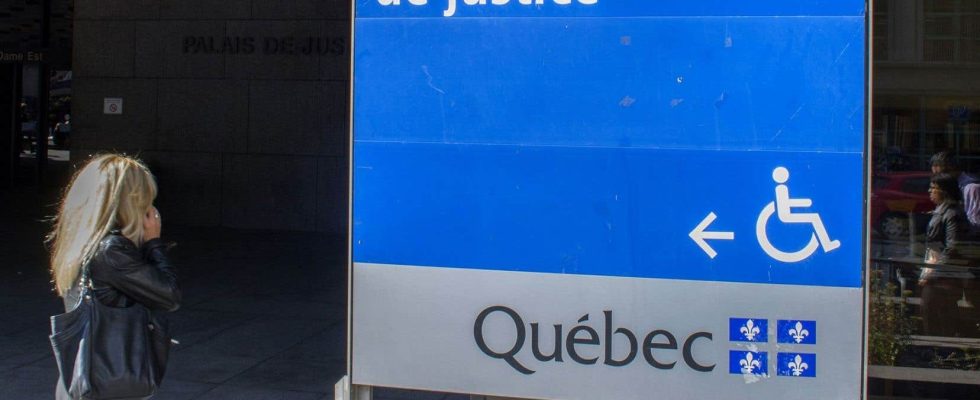The number of private lawyers who accept legal aid mandates has decreased by 20% over the past five years, deplores the Independent Committee on Legal Aid Rates, the CITAJ, which was set up by the Barreau du Québec . Service disruptions have already been noted in certain regions, such as Gaspésie and Saguenay–Lac-Saint-Jean, where citizens cannot (or struggle to) find lawyers to represent them.
In order to make elected officials understand how this situation harms the most disadvantaged Quebecers, CITAJ will appear Tuesday morning at the National Assembly during the study by parliamentarians of the budgetary appropriations of the Ministry of Justice.
The reduction in staff numbers is notable, according to the committee: while there were 2,237 lawyers in private practice who took charge of legal aid cases in 2018-2019, there were only 1,752 in 2022-2023 .
These private lawyers are “essential” to the smooth running of the system, explained in an interview with Duty the president of CITAJ, Me Chantale Plante. They are found in particular in family law, criminal law and youth protection. When they accept such a mandate, they are paid by the Quebec state according to predetermined rates.
They complete 52% of legal aid mandates, she said, with the rest handled by the state’s permanent attorneys. But the latter cannot take care of all the files, because they are overwhelmed or because they have a conflict of interest if they already represent another person involved in a dispute, explains the lawyer specializing in family law and youth protection.
Except that “fewer and fewer of us are accepting legal aid mandates”.
The reason ? The working conditions are unattractive, and the pay is too low, she argued in an interview with her colleague M.e Alexandra Paquette, specialist in prison and criminal law. And the consequences are serious, they insist.
There are already “service interruptions” in certain regions of Quebec. For example, in Bas-Saint-Laurent–Gaspésie–Îles-de-la-Madeleine, no private lawyer accepts legal aid mandates in most areas of law. And in Abitibi and Saguenay–Lac-Saint-Jean, no one takes any action in family law.
Files go from submission to submission as citizens try to find a lawyer who accepts legal aid mandates. In addition to delays, this situation can also lead to court congestion if, due to lack of legal advice, citizens decide to go to trial rather than settle out of court, they illustrate.
Me Paquette, who works in Montreal, adds that as recently as Monday, a man detained in Val-d’Or asked him to represent him since he was unable to find a lawyer in Abitibi.
Prices too low
Current working conditions do not encourage lawyers to take such mandates as part of their practice, maintain the two lawyers. The problem lies above all in terms of remuneration. This is provided for by a state tariff – a combination of flat-rate and fee-for-service payment – which means that remuneration can slip below the minimum wage in certain cases.
The CITAJ offers a typical example to illustrate the situation: to resolve a child custody case from start to finish, the rate is $620 for approximately 45 hours of work in the event that a trial takes place. If we add an average of 12 hours to ensure the client’s eligibility for legal aid and carry out what must be done to comply with the Bar’s requirements, namely scanning and archiving, there is has a total of 57 hours of work.
Which works out to $10.85 per hour.
Me Paquette, the Young Bars representative on CITAJ, indicates that it is also increasingly difficult to interest young lawyers in the practice of legal aid. “I have no argument to convince them,” she laments. She tells them it’s a “vocation.” Except “there are still bills to pay,” she explains.
CITAJ wants the Minister of Justice, Simon Jolin-Barrette, to become more involved and come to the negotiating table to agree on new rates and better working conditions. Since 2017, the Bar has been denouncing the obsolete nature of the legal aid pricing structure.
